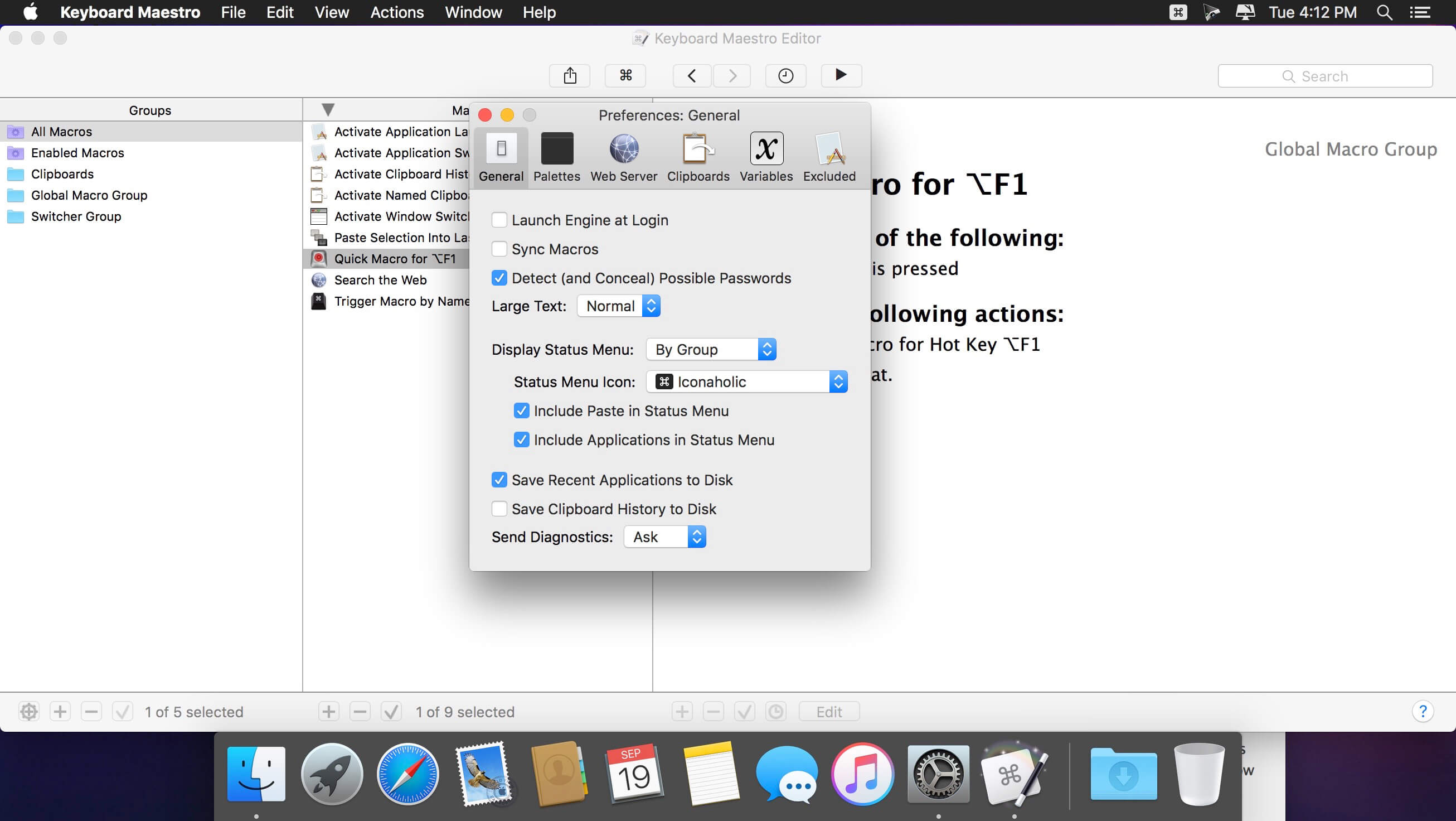AppleScript is a natural language paradigm scripting language developed by Apple. It’s been around since 1993, when it first appeared in System 7. Although the future of AppleScript might be uncertain, it’s here now and it’s pretty darn useful.
If you press the up and down keys, it'll cycle through a history of the commands that you've entered. Handy for that annoying directory that you misspelled trying to switch. Just press the up key. In this Quick Tip, we’re going to create a keyboard shortcut to clear Safari’s browsing history on your Mac, quick as a wink. We understand that sometimes you look at sites that you don’t.
In this guide we go over keyboard event scripting. This is a very rudimentary form of GUI scripting, which is itself a rather rudimentary technique. Although getting started is exceptionally easy, there are a few quirks that tend to show up when interacting with the Mac’s graphical interface in this manner. GUIs are typically designed for humans and aren’t great at handling a series of commands in rapid succession. It’s easy enough for a human to click a button again when the desired action didn’t happen for whatever reason. Not so easy to do that same thing with a script.
Blocs 2 4 5 – visual web design tool software. You may need to enable access for assistive devices before continuing. How exactly this is done varies a little bit between different versions of OS X. In 10.9 Mavericks, go to System Preferences --> Security & Privacy --> Privacy --> Accessibility, then enable access for assistive devices.
Getting started with keystroke and key codeThe following script will start TextEdit and type out the standard “Hello world!” Pretty simple. Try it out in AppleScript Editor. Vmware fusion high sierra download.
Everything between tell application 'System Events' and end tell is run with System Events. tell application 'System Events' is what allows us to script things like the keyboard.
delay 0.5 causes the script to pause for half a second. It’s generally a good idea to have a delay before any keyboard events. There’s a one second pause before keystroke 'Hello world!' to give TextEdit enough time to start. If something isn’t working right the first thing I would check would be the delays.

keystroke space using command down presses the spacebar while holding down the command key. This activates Spotlight. keystroke return hits the return key, starting TextEdit. Finally, keystroke 'Hello world! types “Hello world!` into the new TextEdit window.
This script is interesting because it demonstrates just how tricky it can be deciding where to put delays. Notice that in order to type “TextEdit” into Spotlight we’ve used two keystroke commands. There’s one for “Text” and another for “Edit”. We do this because Spotlight gets weird if we don’t. On my system, running Mavericks on a 2014 MacBook Air, if I use keystroke 'TextEdit' Spotlight will open, “TextEdit” will be typed out and results listed, but then nothing else happens. Sometimes things don’t work in odd and subtle ways, making it difficult to figure out what’s going wrong. https://qjvn.over-blog.com/2020/12/mac-vm-on-windows-7.html. Delays usually fix these kinds of strange behavior. If it’s not working, try adding more delays. I think that’s a good rule of them when it comes to AppleScript keyboard scripting.
Here we use a loop, some variables, and a delay to slow down text entry to a more reasonable speed (although still very fast).
This is a little more work than just using keystroke commands by themselves. But it’s worth it. So much more reliable.

keystroke space using command down presses the spacebar while holding down the command key. This activates Spotlight. keystroke return hits the return key, starting TextEdit. Finally, keystroke 'Hello world! types “Hello world!` into the new TextEdit window.
This script is interesting because it demonstrates just how tricky it can be deciding where to put delays. Notice that in order to type “TextEdit” into Spotlight we’ve used two keystroke commands. There’s one for “Text” and another for “Edit”. We do this because Spotlight gets weird if we don’t. On my system, running Mavericks on a 2014 MacBook Air, if I use keystroke 'TextEdit' Spotlight will open, “TextEdit” will be typed out and results listed, but then nothing else happens. Sometimes things don’t work in odd and subtle ways, making it difficult to figure out what’s going wrong. https://qjvn.over-blog.com/2020/12/mac-vm-on-windows-7.html. Delays usually fix these kinds of strange behavior. If it’s not working, try adding more delays. I think that’s a good rule of them when it comes to AppleScript keyboard scripting.
Here we use a loop, some variables, and a delay to slow down text entry to a more reasonable speed (although still very fast).
This is a little more work than just using keystroke commands by themselves. But it’s worth it. So much more reliable.
Find Keystroke History When to use key codesSometimes we need to automate a key that doesn’t like to exist between quotation marks with a keystroke command. A good example of this are the arrow keys. To press the up arrow key, you’d write key code 126. Here’s a list of some good to know key codes.
- delete
51 - escape
53 - left arow
123 - right arrow
124 - down arrow
125 - up arrow
126
Mv7n2ama. There are also keys that can be used with keystroke without quotes. These are probably easier for most people to remember than their key code equivalent. Remember, don’t use quotes with these.
